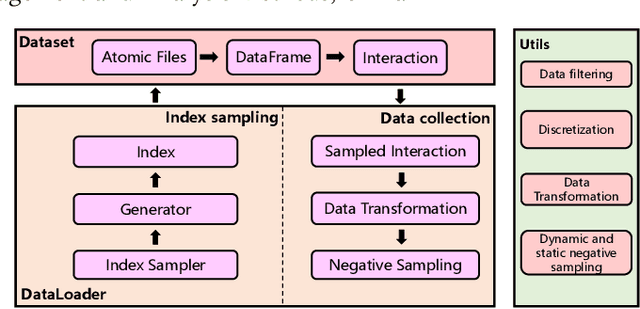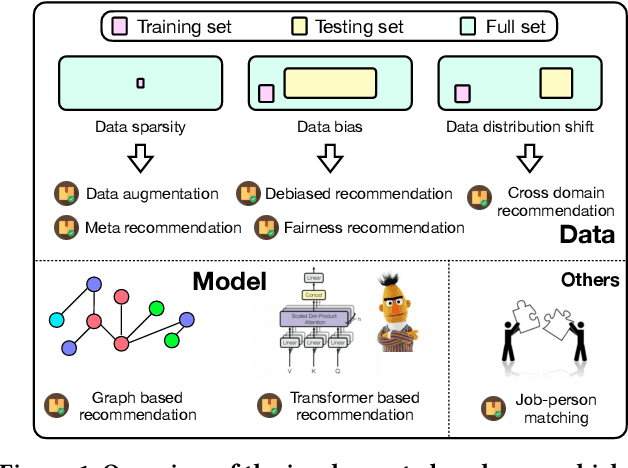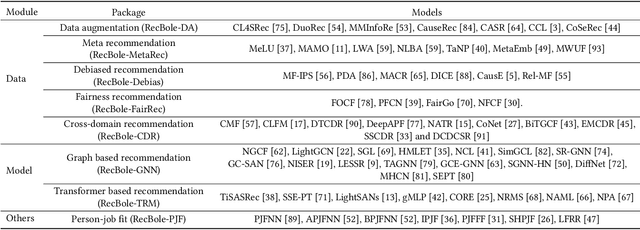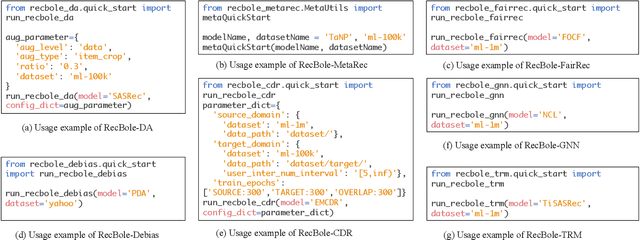Xingyu Pan
Recent Advances in RecBole: Extensions with more Practical Considerations
Nov 28, 2022



Abstract:RecBole has recently attracted increasing attention from the research community. As the increase of the number of users, we have received a number of suggestions and update requests. This motivates us to make some significant improvements on our library, so as to meet the user requirements and contribute to the research community. In order to show the recent update in RecBole, we write this technical report to introduce our latest improvements on RecBole. In general, we focus on the flexibility and efficiency of RecBole in the past few months. More specifically, we have four development targets: (1) more flexible data processing, (2) more efficient model training, (3) more reproducible configurations, and (4) more comprehensive user documentation. Readers can download the above updates at: https://github.com/RUCAIBox/RecBole.
RecBole 2.0: Towards a More Up-to-Date Recommendation Library
Jun 16, 2022


Abstract:In order to support the study of recent advances in recommender systems, this paper presents an extended recommendation library consisting of eight packages for up-to-date topics and architectures. First of all, from a data perspective, we consider three important topics related to data issues (i.e., sparsity, bias and distribution shift), and develop five packages accordingly: meta-learning, data augmentation, debiasing, fairness and cross-domain recommendation. Furthermore, from a model perspective, we develop two benchmarking packages for Transformer-based and graph neural network (GNN)-based models, respectively. All the packages (consisting of 65 new models) are developed based on a popular recommendation framework RecBole, ensuring that both the implementation and interface are unified. For each package, we provide complete implementations from data loading, experimental setup, evaluation and algorithm implementation. This library provides a valuable resource to facilitate the up-to-date research in recommender systems. The project is released at the link: https://github.com/RUCAIBox/RecBole2.0.
Leveraging Search History for Improving Person-Job Fit
Mar 27, 2022Abstract:As the core technique of online recruitment platforms, person-job fit can improve hiring efficiency by accurately matching job positions with qualified candidates. However, existing studies mainly focus on the recommendation scenario, while neglecting another important channel for linking positions with job seekers, i.e. search. Intuitively, search history contains rich user behavior in job seeking, reflecting important evidence for job intention of users. In this paper, we present a novel Search History enhanced Person-Job Fit model, named as SHPJF. To utilize both text content from jobs/resumes and search histories from users, we propose two components with different purposes. For text matching component, we design a BERT-based text encoder for capturing the semantic interaction between resumes and job descriptions. For intention modeling component, we design two kinds of intention modeling approaches based on the Transformer architecture, either based on the click sequence or query text sequence. To capture underlying job intentions, we further propose an intention clustering technique to identify and summarize the major intentions from search logs. Extensive experiments on a large real-world recruitment dataset have demonstrated the effectiveness of our approach.
 Add to Chrome
Add to Chrome Add to Firefox
Add to Firefox Add to Edge
Add to Edge